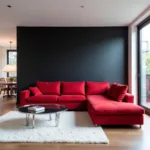Amber, a warm, inviting hue reminiscent of honey and autumn leaves, holds a timeless appeal. Whether you’re an artist, a designer, or simply looking to refresh your home, understanding how to make amber color opens up a world of creative possibilities. This rich, versatile color can be achieved through various methods, depending on your medium. Let’s delve into the fascinating world of creating this captivating color.
Similar to what colors look good on yellow undertones, understanding the underlying principles of color mixing is crucial for achieving the perfect amber.
Mixing Amber: A Comprehensive Guide
Creating amber involves blending colors, primarily yellows, oranges, and reds. The precise proportions and specific shades you use will determine the final amber tone, ranging from light, golden ambers to deep, reddish-brown variations.
Mixing Amber with Paints
For artists and DIY enthusiasts working with paints, achieving amber requires a careful balance of yellow and red. Start with a base of yellow paint and gradually add small amounts of red, mixing thoroughly until the desired amber hue emerges. A touch of orange can enhance the warmth and depth of the color. Experimentation is key to finding your perfect amber.
- Start with a generous amount of yellow paint.
- Gradually add small increments of red paint.
- Mix thoroughly after each addition.
- Incorporate a small amount of orange for warmth (optional).
- Test the color on a scrap piece of material before applying to your final surface.
Creating Amber with Dyes
Dyes offer a vibrant and translucent way to achieve amber color. The process is similar to mixing paints, but the color intensity and transparency will differ. Start with a yellow dye base and carefully introduce red and orange dyes, observing the color changes as you mix.
- Prepare your dye solutions according to the manufacturer’s instructions.
- Begin with a yellow dye base.
- Add red and orange dyes in small increments.
- Mix thoroughly and observe the color changes.
- Test the dye on a small sample of your intended material.
Achieving Amber in Digital Design
In the digital realm, creating amber is a precise process involving specific color codes. The hexadecimal code for a typical amber color is #FFBF00. Variations can be achieved by adjusting the RGB (Red, Green, Blue) values.
- Use the hexadecimal code #FFBF00 as a starting point.
- Adjust the RGB values to fine-tune the amber hue.
- Experiment with different color palettes and gradients to create unique amber effects.
Just as with what color light makes you sleepy, understanding the impact of color can influence your design choices.
FAQs about Making Amber Color
Here are some frequently asked questions about creating amber color:
- What colors make amber? Primarily yellow and red, with optional additions of orange for warmth.
- What is the hex code for amber? A common hex code for amber is #FFBF00.
- Can I make amber with food coloring? Yes, you can achieve amber hues by mixing yellow and red food coloring.
- How do I make a darker amber? Add more red to the mixture.
- How do I make a lighter amber? Add more yellow or white to the mixture.
- What is the difference between amber and orange? Amber is typically deeper and more complex than a pure orange, often containing hints of brown or red.
- What are some common uses for amber color? Amber is used in art, design, fashion, and even in lighting and signal systems.
The Versatility of Amber: Applications and Inspirations
Amber is a versatile color with applications across various fields. From fashion and interior design to graphic design and branding, amber adds a touch of warmth and sophistication.
“Amber’s warm, earthy tones bring a sense of comfort and stability to any space,” says renowned interior designer, Amelia Hawthorne. “It’s a color that evokes feelings of warmth and welcome.”
This color is also frequently used in signaling and lighting due to its high visibility.
“The use of amber in traffic lights is a testament to its effectiveness in attracting attention,” adds color psychologist, Dr. David Chen. “Its warm glow provides a sense of caution without being overly jarring.”
Understanding how to make amber color empowers you to explore its creative potential. By mastering the art of color mixing, you can unlock a spectrum of amber hues and create captivating visual experiences.
Similar to what color of polarized lenses are best, choosing the right color can greatly influence the desired effect.
Conclusion
Making amber color is a rewarding process that opens doors to a world of creative possibilities. Whether you’re mixing paints, dyes, or working in digital design, understanding the underlying principles of color blending is key. By experimenting with different proportions and shades, you can achieve a spectrum of amber hues to suit your specific needs.
For any support or further inquiries, please contact us at Phone: 0373298888, Email: [email protected] or visit us at 86 Cau Giay, Hanoi. Our customer service team is available 24/7.

